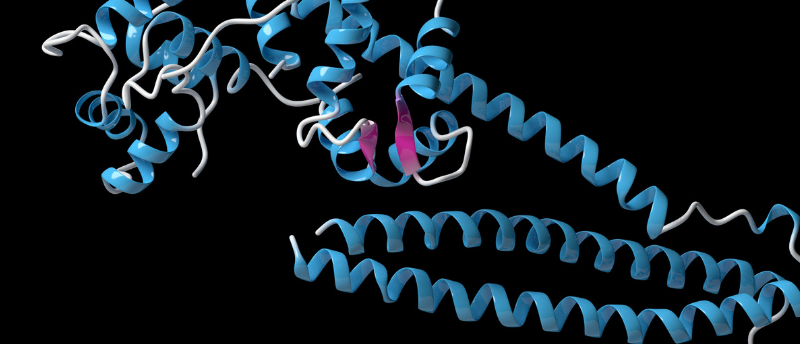How can biomarkers guide cancer prevention, diagnosis and treatment?


Grace Liu joined Sino Biological in 2022, supporting CRO services and project management in the western and central US regions. Grace received her Ph.D. in Medical Science from Baylor College of Medicine in Houston (TX, USA). Prior to joining Sino Biological, she worked in the Houston Methodist Research Institute (TX, USA) as a postdoctoral fellow focused on sustained drug-eluting devices for cancer immunotherapy. In this interview, Grace discusses how biomarkers play a crucial role in cancer prevention and diagnosis, and how they can help guide treatment decisions.
Can biomarkers help prevent cancer?
Biomarkers are indicators in the body that can be used to detect the presence or progression of a disease. Biomarkers can also be used to detect cancer at an early stage, when it is more treatable. For example, certain proteins or genetic markers can be measured in blood or other body fluids to detect the presence of cancer cells or early signs of tumor development. Early detection through biomarkers can lead to prompt treatment and better outcomes. Therefore, biomarkers can help prevent cancer by identifying individuals at higher risk of developing cancer, allowing for early intervention and preventive measures.
Certain genetic biomarkers can be used to identify individuals with inherited gene mutations that increase their risk of developing certain types of cancer, such as BRCA1 and BRCA2 mutations in breast and ovarian cancer [1]. Doctors can recommend preventive approaches such as increased surveillance, lifestyle modifications or even prophylactic surgeries to reduce the risk of developing cancer by detecting these genetic biomarkers.
Hence, biomarkers play a crucial role in cancer prevention by identifying individuals at risk and enabling early detection, which can significantly reduce the incidence and mortality of cancer.
What is the role of biomarkers in cancer treatment?
Biomarkers can be found in various bodily fluids such as blood, urine or tissue samples. They can include molecules such as proteins, DNA, RNA, hormones or metabolites [2]. Biomarkers can be used in medical research and clinical settings to diagnose diseases, monitor disease progression, assess treatment response and predict outcomes. In the context of cancer, biomarkers can be used to detect the presence of cancer cells, identify specific tumor types, determine the stage of the disease and predict the likelihood of response to certain treatments. Not only can biomarkers identify individuals who may be at a higher risk of developing cancer, but they can also help monitor the effectiveness of cancer treatments and detect any recurrence or progression.
Biomarkers allow for more targeted and effective healthcare interventions. It is likely to improve early detection, prevention and treatment of various diseases, including cancer.
How do biomarkers guide cancer treatments?
Biomarkers are used to guide decision-making regarding the choice of therapy, predict treatment response, monitor treatment effectiveness and detect any recurrence or progression of the disease. Biomarkers in cancer treatment can be classified into several categories:
- Diagnostic biomarkers: To identify the presence of cancer and determine the tumor type via specific genetic mutations or alterations, such as HER2/neu in breast cancer or EGFR in lung cancer.
- Prognostic biomarkers: To predict the likely outcome or prognosis of cancer patients, such as the disease aggressiveness and the likelihood of recurrence or progression. For example, the presence of certain genetic mutations or the expression levels of specific proteins can indicate a poorer prognosis.
- Predictive biomarkers: To predict the response to a particular treatment or therapy. They can indicate whether a patient is likely to benefit from the treatment or if they are more likely to experience adverse effects. For example, the presence of certain genetic mutations like KRAS in colorectal cancer, indicate possible resistance to specific targeted therapies.
- Monitoring biomarkers: To assess treatment effectiveness and monitor disease progression, the levels of circulating surveillance biomarkers such as CA-125 in ovarian cancer or PSA in prostate cancer can be measured. Imaging techniques can also track changes in tumor size or metabolic activity.
Biomarkers allow healthcare providers to tailor treatment plans to individual patients, optimizing outcomes and minimizing treatment-associated side effects. They help guide treatment decisions, improve patient outcomes and contribute to the development of more effective therapies.
How can we detect biomarkers?
There are various methods and techniques used to detect biomarkers, depending on the type of biomarker and the purpose of detection. Here are some common approaches:
- Immunoassays: Immunoassays use specific antibodies that bind to the biomarker of interest. This can be done through techniques such as enzyme-linked immunosorbent assay (ELISA) or immunohistochemistry (IHC). The presence and quantity of the biomarker can be measured by detecting the signal generated by the antibody binding interaction [3].
- Genetic testing: Genetic biomarkers, such as mutations or alterations in specific genes, can be detected through techniques like polymerase chain reaction (PCR), DNA sequencing or fluorescence in situ hybridization (FISH). These methods allow for the identification of specific genetic biomarkers associated with cancer.
- Imaging techniques: Imaging techniques, such as positron emission tomography (PET) or magnetic resonance imaging (MRI) can be used to detect biomarkers associated with cancer. For example, PET scans can use radiotracers that specifically bind to cancer cells or specific molecules, allowing for the visualization and detection of tumors.
- Liquid biopsy: Liquid biopsy involves analyzing biomarkers present in bodily fluids, such as blood, urine or cerebrospinal fluid. This non-invasive method can detect circulating tumor cells (CTCs), cell-free DNA (cfDNA) or exosomes that carry specific biomarkers. Technology like next-generation sequencing (NGS) or digital PCR can be used for liquid biopsy-based biomarker measurements [2].
Are biomarkers measurable?
Yes, biomarkers are measurable. Biomarkers are typically quantifiable molecules or characteristics that can be measured using various approaches and technologies. The measurement provides quantitative data for assessing the presence, level or activity of a specific biological process or condition.
For example, we can measure biomarker concentrations in blood, urine or other bodily fluids using techniques like ELISA, PCR, mass spectrometry or imaging methods. The results provide information about the presence, abundance or changes in the biomarker, which can be correlated with the disease types, treatment response or prognosis [3].
Well-validated and standardized assays or techniques to ensure accuracy and reliability are crucial for biomarker measurements for clinical and research applications.
What’s the future direction of biomarkers in precision medicine?
Precision medicine, also known as personalized medicine, is an approach to healthcare that takes into account individual variability in genomics, proteomics, environment and lifestyle for each person. The future direction of biomarkers in precision medicine is focused on advancing personalized and targeted approaches to disease prevention, diagnosis and treatment. Here are some key areas of development:
- Multi-omics integration: Integrating data from multiple omics disciplines (genomics, transcriptomics, proteomics, metabolomics, etc.) will provide a more comprehensive understanding of diseases and individual patient profiles [2]. This integration can identify complex biomarker signatures that can better predict disease risk, treatment response and prognosis.
- Microbiome biomarkers: The human microbiome, composed of trillions of microorganisms, plays a crucial role in health and disease. Identifying and characterizing microbiome biomarkers can provide insights into disease risk, treatment response and the development of microbiome-targeted therapies.
- Tailored treatment strategies: Precision medicine aims to develop targeted therapies that are specific to the molecular alterations or biomarkers identified in an individual patient. This approach allows for more effective and personalized treatment options, minimizing unnecessary treatments and potential side effects.
- Predictive and preventive strategies: Precision medicine focuses on predicting disease risk and implementing preventive measures based on an individual’s genetic and environmental factors. By identifying individuals at high risk of developing certain diseases, interventions can be implemented to prevent or delay the onset of the disease.
- Artificial intelligence (AI) and machine learning: Precision medicine relies on the integration and analysis of large-scale data, including genomic data, clinical records, lifestyle information and environmental factors. Advanced computational and analytical tools are used to interpret and derive meaningful insights from these data, enabling evidence-based decision making [4].
In summary, precision medicine has the potential to revolutionize healthcare by enabling more targeted and effective treatments, reducing adverse reactions and improving patient outcomes. Biomarker-driven precision medicine relies on the identification and use of biomarkers, which are measurable indicators of biological processes or disease states. Biomarkers can be genetic, molecular, imaging-based or clinical characteristics that help guide diagnosis, prognosis and treatment decisions. These advancements will enable more precise and effective disease prevention, diagnosis and treatment strategies tailored to individual patients.